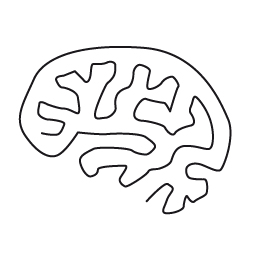The Four Paths of Yoga
Raja Yoga - The Science of Physical and Mental Control

Often called the "royal road" it offers a comprehensive method for controlling the waves of thought by turning our mental and physical energy into spiritual energy. Raja Yoga is also called Ahtanga Yoga referring to the eight limbs leading to absolute mental control. The chief practice of Raja Yoga is meditation. It also includes all other methods which helps one to control body, energy, senses and mind. The Hatha-Yogi u ses Relaxation and other practices such as Yamas, Niyamas, Mudras, Bandhas etc.. to gain control of the physical body and the subtle life force called Prana. When body and energy are under control meditation comes naturally.
Ashtanga - The Eight Limbs of Raja Yoga
Compiled by the Sage Patanjali Maharishi in the Yoga Sutras, the Eight Limbs are a progressive series of steps or disciplines which purify the body and mind, ultimately leading the yogi to enlightenment.
These 8 limbs are:
- Yamas - The Yamas or restraints (Don'ts) are divided into five moral injuctions, aimed at destroying the lower nature. They should all be practiced and developped by the letter but also more importantly in the spirit. They should all be practiced in word, thought and deed.
- Ahimsa or non-violence
- Satyam or truthfulness
- Brahmacharya or moderation in all things (control of all senses). Also refers to celibacy
- Asteya or non-stealing
- Aparigraha or non-covetousness
- Niyamas - The Niyamas or observances (Do's) are also divided into five and complete the ethical precepts started with the Yama.. These qualities are:
- Saucha or purity - this internal and external cleanliness.
- Santosha or contentment
- Tapas or austerity
- Swadhyaya or study of the sacred texts
- Ishwara Pranidhana which is constantly living with an awareness of the divine Presence (surrender to God's Will)
- Asanas - Postures
- Pranayama - regulation or control of the breath. Asanas and Pranayama form the sub-division of Raja Yoga known as Hatha-Yoga
- Pratyahara - withdrawal of the senses in order to still the mind.
- Dharana - concentration. The last 3 steps constitute the internal practice of Raja Yoga. When Dharana is achieved, it leads to the next step:
- Dhyana - meditation is that state of pure thought and absorption in the object of meditation. There is still duality in Dhyana. When mastered Dhyana leads to the last step:
- Samadhi - the superconscious state. In Samadhi non-duality or oneness is experienced. This is the deepest and highest state of consciousness where body and mind have been transcended and the Yogi is one with the Self or God.


